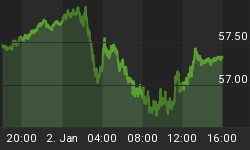In response to some of my recent posts on self-driving and electric vehicles, several readers asked if the electric grid could handle the increase. Other readers flat out stated the electric capacity was insufficient.
What's the real story?
An electrical engineer in the utility industry emailed his thoughts in a pair of emails yesterday.
Mish,
I agree with you 100% about autonomous trucking. The driver plus insurance represent 39% of the cost per mile of operating a truck, according to the ATRI.
Something you might consider is that autonomous trucking will make electric trucks inevitable. It is easy to build a 200-mile range electric truck today. There are a few on the market. Driving this across the country makes no sense if you're paying a driver to sit around for 1.5 hours every 200 miles (based on a 400kWh battery and a 350kW charger). Once autonomous trucks work, only electric makes sense. The value of fuel savings is much more than the lost productivity from frequent stops.
Electric trucks require 2kWh/mi to operate and will have dramatically lower repair and maintenance costs. ATRI says a diesel truck's fuel plus R&M is 58.3c/mi plus 15.8c/mi. At the national average 10c/kWh and 90% lower R&M costs, the electric truck fuel plus R&M will be 70% cheaper.
If you are concerned about battery life replacement costs, Tesla has already demonstrated that properly operating a battery can dramatically reduce degradation. They see about 5% of range loss per 100k miles of operation. Some of this is related to aging and some to use. Either way, oversizing the battery pack so it provides a reasonable range for its life is pretty economic.
With reasonable assumptions, autonomous driving will make freight 40% cheaper per mile. Autonomous electric will be 55% cheaper per mile compared to today.
I asked the responder what his background was, whether or not I could quote him, and whether or not he had any links or supporting evidence to back his claims.
He said the company he worked for would not like the publicity but he had a link and a personal spreadsheet to back his claims.
I said I would call him EEUI (Electrical Engineer Utility Industry).
Second Email from EEUI
I'm an electrical engineer in the utility industry. I've been studying this question from an electric load growth perspective. Electrifying overland freight in my part of the world would increase our load by about 30%. Maybe more, if the cost reductions resulted in more freight being hauled.
Check out the ATRI report on Operational Costs of Trucking. The relevant information is on page 17:
The attached are my numbers. All numbers are in dollars per mile. WAG stands for wild ass guess. I assume that automation increases the equipment cost by 20% and electrification by another 80%.
You're welcome to use my numbers but I work in an industry that prefers to avoid publicity.
EEUI
Truck Costs From ATRI

$23.61 in driver wages and benefits will largely vanish. That's a 34.7 % reduction in costs rights there assuming all driver miles vanish (which they won't).
But insurance costs will drop as will maintenance costs. Electric vehicles have far fewer parts to wear out and things like braking will be much smoother.
That's how I saw things before looking at EEUI's spreadsheet.
EEUI Spreadsheet
| Diesel from ATRI | Automated | Elec Automated | |||
| Fuel | 0.583 | 0.583 | same | 0.2 | 10c/kWh, 2kWh/mi |
| Lease | 0.215 | 0.258 | 20% higher (WAG) | 0.43 | 100% higher (WAG) |
| R&M | 0.158 | 0.158 | same | 0.0158 | 90% lower |
| Insurance | 0.071 | 0.0071 | 90% lower | 0.0071 | 90% lower |
| Permits | 0.019 | 0.019 | same | 0.019 | same |
| Tires | 0.044 | 0.044 | same | 0.044 | same |
| Tolls | 0.023 | 0.023 | same | 0.023 | same |
| Driver wage | 0.462 | 0 | 0 | ||
| Driver ben | 0.129 | 0 | 0 | ||
| 1.704 | 1.0921 | 0.7389 | |||
| Saving | 36% | Savings vs Automated | 32% | ||
| Savings vs Today | 57% |
EEUI estimates an operating saving of 36% with diesel and 57% with electric.
My assumption is that EEUI is on the high side, perhaps by a lot, especially with electric. But that is not what matters. A savings of 20% is enough to guarantee automation. An additional savings of another 15% or less is enough to make electric happen.
Move to Driverless Accelerates
A Study Says by 2030 1/4th of Miles Driven will be Driverless. I expect 85 percent of miles driven will be driverless by 2030.
For further discussion, please consider Second-Order Consequences of Self-Driving Vehicles.
Also consider Portland Says Yes to Testing Driverless Cars, Other Cities Will Follow: Mass Adoption When?
The move to driverless is clearly accelerating and for numerous good reasons. Savings will force the industry in these directions, far sooner than most believe.
















